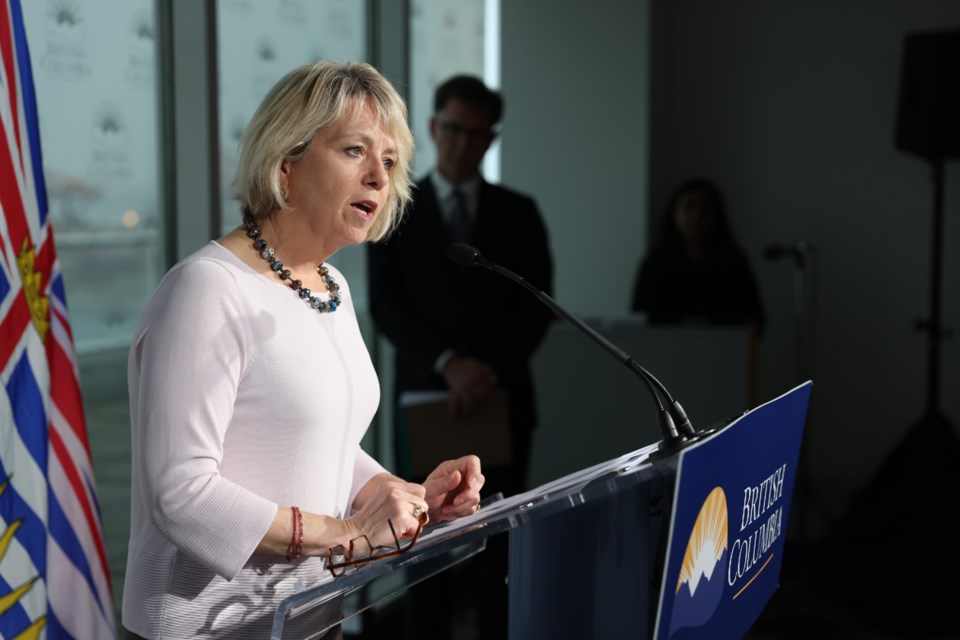British Columbia's top doctor says contact tracers are "stretched to the max" and falling behind as they try to keep up with the province's growing COVID-19 infection rate.
The latest modelling data from provincial health officer Bonnie Henry came as B.C. surpassed 20,000 cases with four more deaths and 1,130 new cases detected over two days.
Henry said 808 of those cases are in the Fraser Health region and 249 are in Vancouver Coastal Health region, where the primary source of transmission remains social and community interactions.
One infection can cause a cascade of trouble, she said, using the example of a small wedding where 15 people became positive. Ten of those people had additional household cases and one person spread the illness to a long-term care home where three people were hospitalized and one died.
The virus spreads more easily in cooler weather, said Henry, particularly when people are inside, which is why it's so important for people to reduce their contacts and step up their safety measures now.
“There are things that we could get away with in the summer, probably because of the seasonality of the virus. We’re learning that it doesn’t spread as well when temperatures are warmer."
Henry pointed out that the number of cases per day has doubled every 13 days in the past few weeks, making it harder for contact tracers to keep up and break the chains of transmission.
There have been very few transmission events in schools or daycares, said Henry, and kids under 10 are under-represented among new cases even though testing has increased in that age group.
Despite more than 260 school exposures, there have been fewer than a dozen instances of transmission in a school setting, she said. There has been one outbreak at a school in the Interior Health region.
Nine in 10 schools in B.C. have not had an exposure event, Henry added.
The median age of cases has come down since the start of the pandemic, hovering around the low to mid 30s, she said, but the illness has recently been spilling into older age groups and long-term care homes.
Henry also shared the results of the province’s latest serology testing that estimates how many people in B.C. have antibodies indicating they have contracted the illness. The prevalence was still around one per cent in September, but B.C. has since entered a new phase of the outbreak, she said.
The so-called reproductive number that indicates how many people on average a person sick with COVID-19 transmits the illness to is now above one, said Henry.
“When you’re above one, that gives the potential for it to spread quite rapidly.”
Henry noted that B.C. had bent its reproductive number down prior to the Thanksgiving weekend.
B.C. has now recorded 20,368 cases since the start of the pandemic, including 5,793 infections that are active. There are nearly 11,100 people being monitored after exposure to a known case and 14,089 people who tested positive have recovered.
A public health order restricting social interactions and other activities is in place in the Vancouver Coastal and Fraser Health regions until Nov. 23, though Henry has said it could be extended.
"We are in a challenging time. Perhaps the most challenging time of this pandemic," she said, while pointing to positive news about vaccines that could become available early next year.



